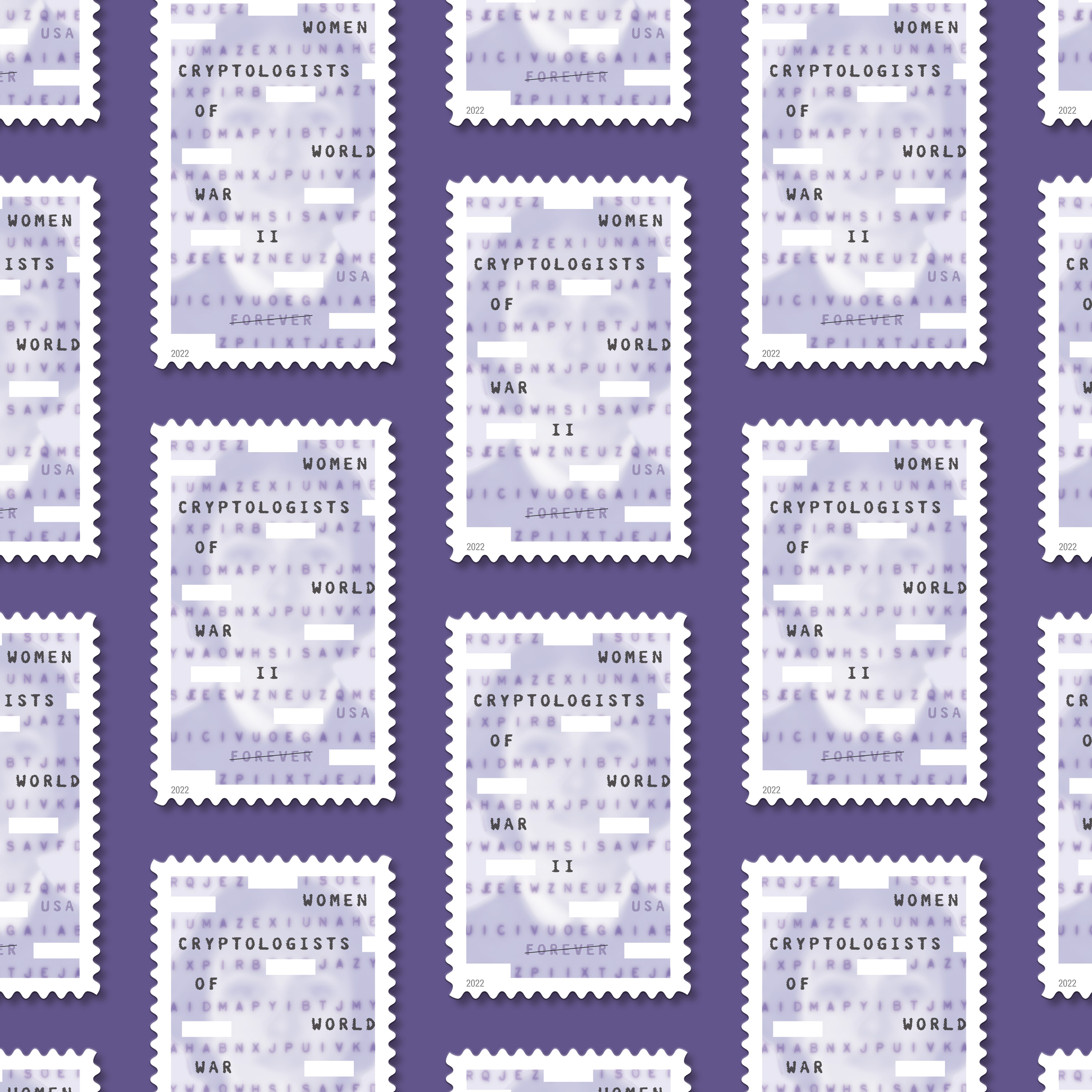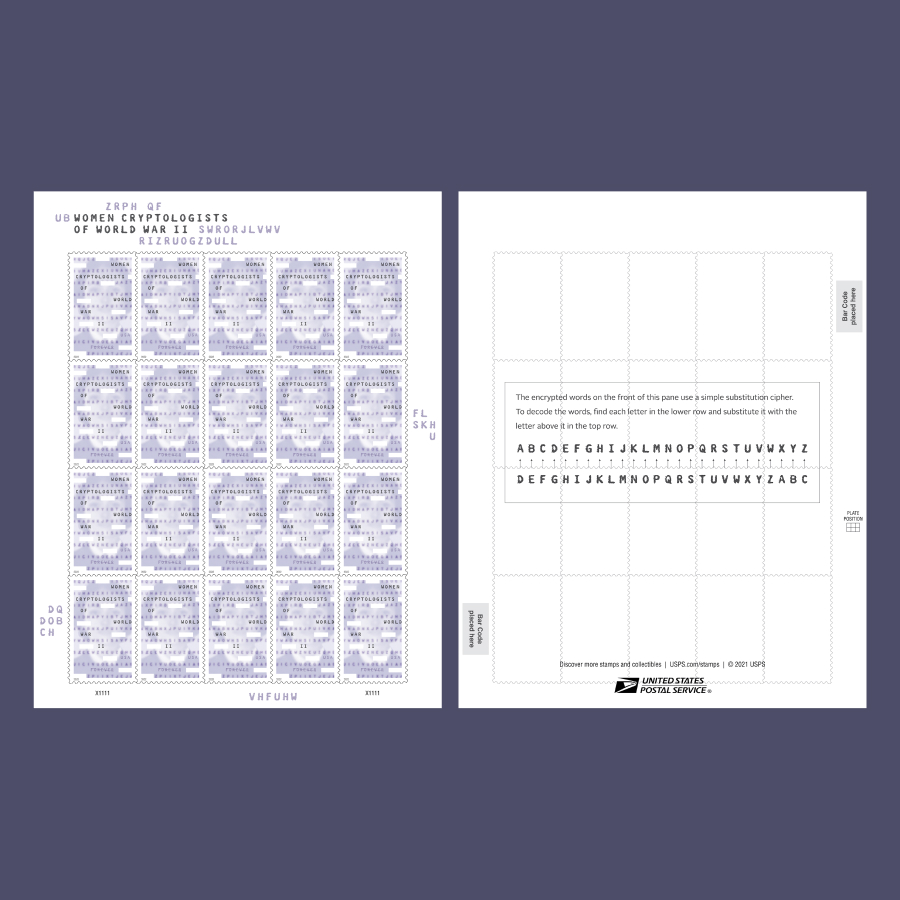
Hidden Figures
Some 11,000 American women labored day and night during World War II to decipher an endless stream of military messages. Notable among them was Genevieve Grotjan, a cryptologist with the Army’s Signal Intelligence Service, who discovered the key to cracking the “Purple” code used by the Japanese. Her discovery not only revealed shipping routes but troop movements as well.
The stunning achievements of these women saved countless lives and helped pave the way for Allied victory. Designer Antonio Alcalá, one of four art directors nationwide currently entrusted by the Postal Service™ with overseeing stamp design, told us how he created the mysterious stamp commemorating their efforts.
What do you love most about being a graphic designer, and a stamp designer at that?
One of my favorite parts of being a graphic designer is being presented with a problem and searching for a creative solution. I want to tell a visual story with the pieces I design. This stamp gave me a chance to do just that.
What did you have to do to prepare for this project?
When I was assigned this project, I wasn’t sure where to start. But I was able to travel to the National Security Agency’s cryptologic museum in Maryland to begin my research. The tour was stunning. The librarian shared Genevieve’s story and let me look at her actual work deciphering the Purple code. These papers and the code itself gave me the idea for the stamp’s design.
What was the most challenging part of this design?
Throughout the process, I wanted collectors to feel that they were a part of this shadowy world. I knew I wanted to include a picture of a woman cryptologist on the stamp. While Genevieve’s story was remarkable, it was more than just her story I needed to tell.
With Genevieve as my inspiration, I created an anonymous, period-accurate representation of a woman serving in the U.S. government. This woman is a stand-in for all the women cryptologists during the war.

Tell us about the other elements on the stamp.
Everything about this stamp is designed to evoke a sense of knowing and not knowing. I scanned the Purple code itself to add texture and content to the stamp. I selected a font evocative of the typewriters of the time for the typography. The rectangle cut-outs placed strategically throughout suggest hidden or redacted information. They add another texture and rhythm to the design.
For fun, there is a simple substitution cipher that I created and placed in the selvage. If you want to try your hand at breaking the code, you’ll find the cipher on the back of the pane of stamps.
How do you hope people will respond to the stamp?
Sadly, this story is not widely known. Our country is slowly becoming aware that the generals and soldiers were not the only ones who helped us win the war. I hope this stamp encourages people to learn more about women cryptologists like Genevieve Grotjan and celebrate their remarkable achievements.